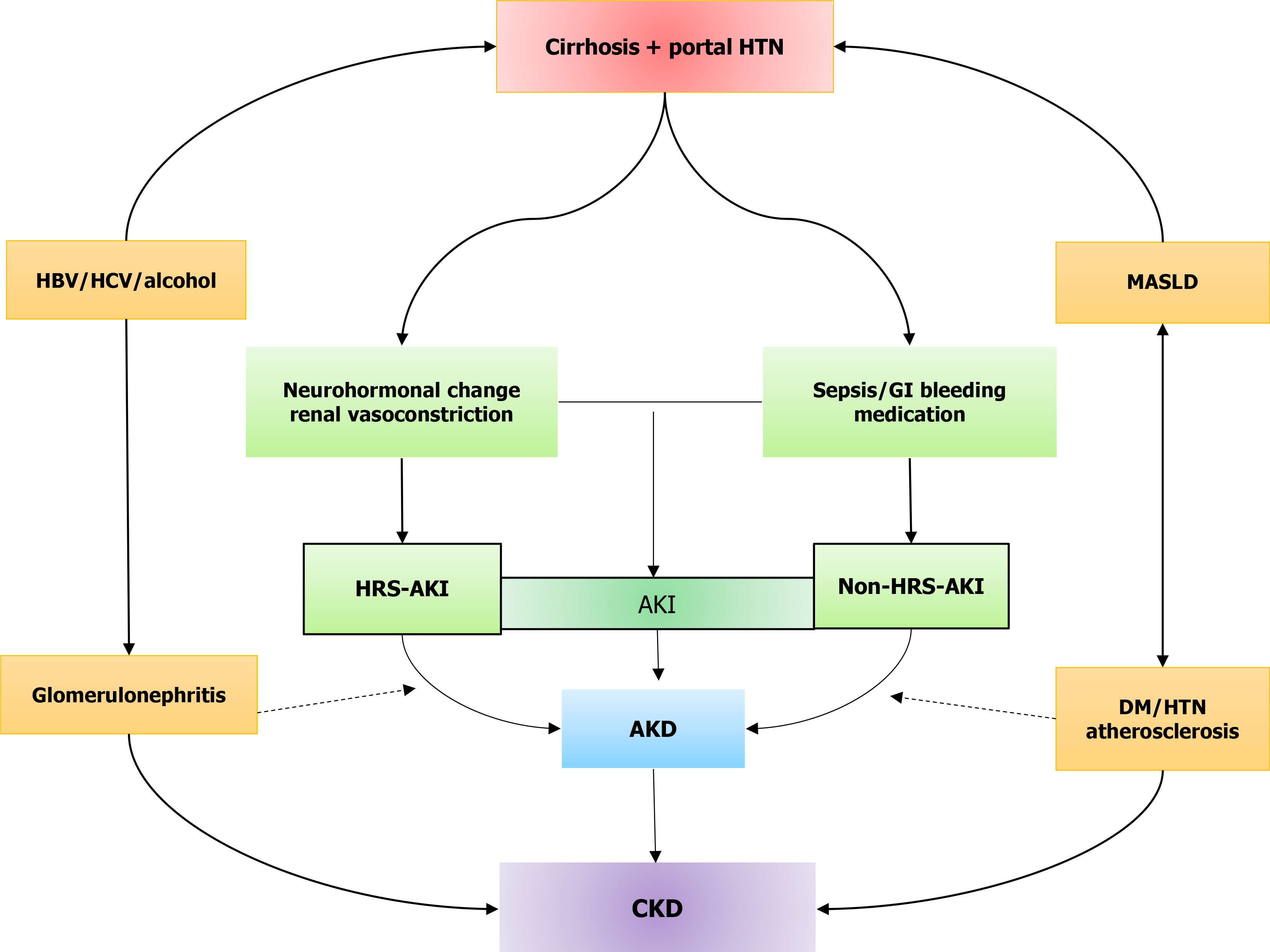Copyright
©The Author(s) 2025.
World J Nephrol. Mar 25, 2025; 14(1): 102381
Published online Mar 25, 2025. doi: 10.5527/wjn.v14.i1.102381
Published online Mar 25, 2025. doi: 10.5527/wjn.v14.i1.102381
Figure 1 Diagrammatic representation of factors associated with chronic kidney disease in liver cirrhosis patients.
Acute kidney disease due to various causes can progressed to chronic kidney disease (CKD) in a significant proportion of cirrhosis patients. In addition, diabetes mellitus, hypertension and fatty liver disease, and certain etiological factors also increase the risk of CKD. AKI: Acute kidney injury; AKD: Acute kidney disease; CKD: Chronic kidney disease; DM: Diabetes mellitus; GI: Gastrointestinal; HBV: Hepatis B virus; HCV: Hepatitis C virus; HTN: Hypertension; HRS: Hepatorenal syndrome; MASLD: Metabolic dysfunction-associated steatotic liver disease.
Figure 2 Transition of acute kidney injury to chronic kidney disease in cirrhosis patients: Natural history and management strategies.
The progression from acute kidney injury to chronic kidney disease represents a continuum of renal dysfunction that occurs through an intermediary stage called acute kidney disease. AKD: Acute kidney disease; AKI: Acute kidney injury; CKD: Chronic kidney disease; NAKI: Non-acute kidney injury; SLKT: Simultaneous liver and kidney transplantation.
- Citation: Marrapu S, Kumar R. Transition from acute kidney injury to chronic kidney disease in liver cirrhosis patients: Current perspective. World J Nephrol 2025; 14(1): 102381
- URL: https://www.wjgnet.com/2220-6124/full/v14/i1/102381.htm
- DOI: https://dx.doi.org/10.5527/wjn.v14.i1.102381










